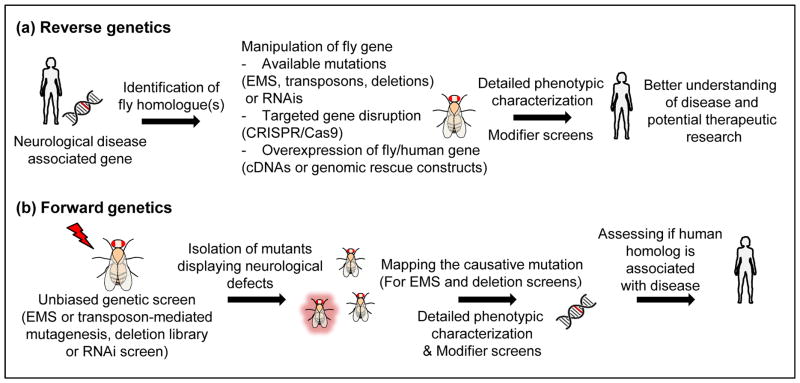FIGURE 1.
Genetic approaches enabling neurological disease research in Drosophila (a) Reverse genetic approaches in flies are based on the identification of the fly homologue(s) of the disease-associated gene and the assessment of phenotypes caused by genetic manipulations of the gene of interest. Upon examination of the gene’s function, modifier screens can be performed to identify additional genes that act as either enhancers or suppressors of determined phenotypes. (b) Forward genetic approaches identify mutants with a certain phenotype of interest (such as neuronal dysfunction or neurodegeneration) based on unbiased genetic screens. Upon mapping of the causative mutations to genes whose human homologues are associated with disease, detailed phenotypic characterizations can be performed to provide a better understanding of the gene’s function.

